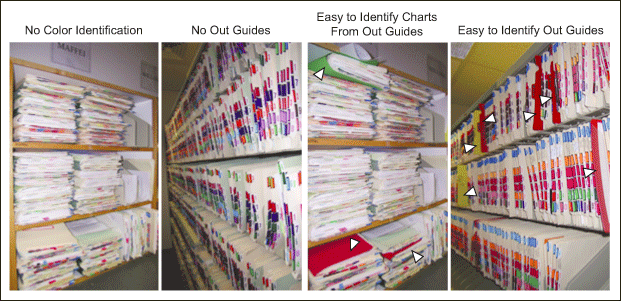In early 2007, a friend I met from a conference on which he and I both spoke, shared an interesting project with me. He gave me permission to share this project, but without any names involved.
At this person’s family practice, the clinical team had been dealing with unorganized medical records, leading to an unusually high search time for the patient’s medical record.
I know what you’re thinking: why not just buy an Electronic Medical Records System? That’s a topic for another conversation. But here’s the gist: it is wise to create a well-formed and efficient manual process first; then, it makes sense to automate it. Companies get into trouble when they force their processes to match their systems, when process should come first, then design the system to support process.
That’s what this team did. They decided to improve their current manual process and the results they obtained helped the patient and the clinic staff tremendously.
Before the Kaizen Event
The team did the following prior to the actual Kaizen event:
- Team gathered time study data on patient encounters
- Team documented back office medical records process to understand process steps, distances traveled and opportunities for improvement, including a value stream map and identifying value add and non value added steps.
Even though the goal of this clinic was to transition to an electronic medical records system, documenting and improving the current process was really the first step they needed to do.
Here was one astounding result from the Pre Kaizen work the team did:
- The staff spend at an average of 8.5 hours of time searching across 39 potential locations for missing charts that were not in the file room.
The Kaizen Event
After some preliminary 3 hour training of the clinical staff, the clinic staff immediately went to work with 5S of the file room, front desk area, physician and also the resident mailboxes. This was done to create a condition of visual management so the staff could more easily identify a problem and create a point-of-use environment so that things are located where they are used. According to my source, this clinic had apparently accumulated years of stuff just sitting in the clinic.
Then, the team split into several sub-teams to brainstorm ideas with the goal of:
- decreasing the number of chart locations and creating a process for staff to easily identify chart locations without generating additional work.
For this team, they generated some great ideas that ultimately led to the following practical countermeasures:
- The team created colored out guides to track charts that were being pulled for
- physician messages or refills
- triage nurses
- irregular labs
- etc.
And, of course, the goal is to decrease the time spent searching for files and enable a tracking process for charts pulled for reasons other than for standard appointments.
A process change immediately was implemented and the results of the after Kaizen time study were the following:
- time spent looking for a chart decreased on average from six minutes to two minutes.

But the team didn’t stop there. They also moved the nurses™ triage station from the library office down the hall from the front desk area to a more convenient location right next to the file room. This simple change decreased non-value-added activities due to travel time by 0.2 miles per day for refill calls (over 100 refills per day) and created a line of sight between the staff and triage nurse, improving communication for response to patient calls. Ultimately, the library was also relocated to the other end of the practice to move it closer to the preceptors and resident workspaces.
According to my source, the biggest impact wasn’t necessarily the quantifiable measures that were apparent in the before-kaizen and after-kaizen, but the culture change that happened to each of the participants was the biggest positive and long-lasting change. This last benefit is often the most long-term benefit – because the change happened internally in the participants, they can apply what they had learned to other clinical processes in the future.








Hi Pete,
Excellent post! I especially liked two main points that it’s better to improve a manual system before automating it and the biggest impact is the culture change and not the actual results. Spot on!